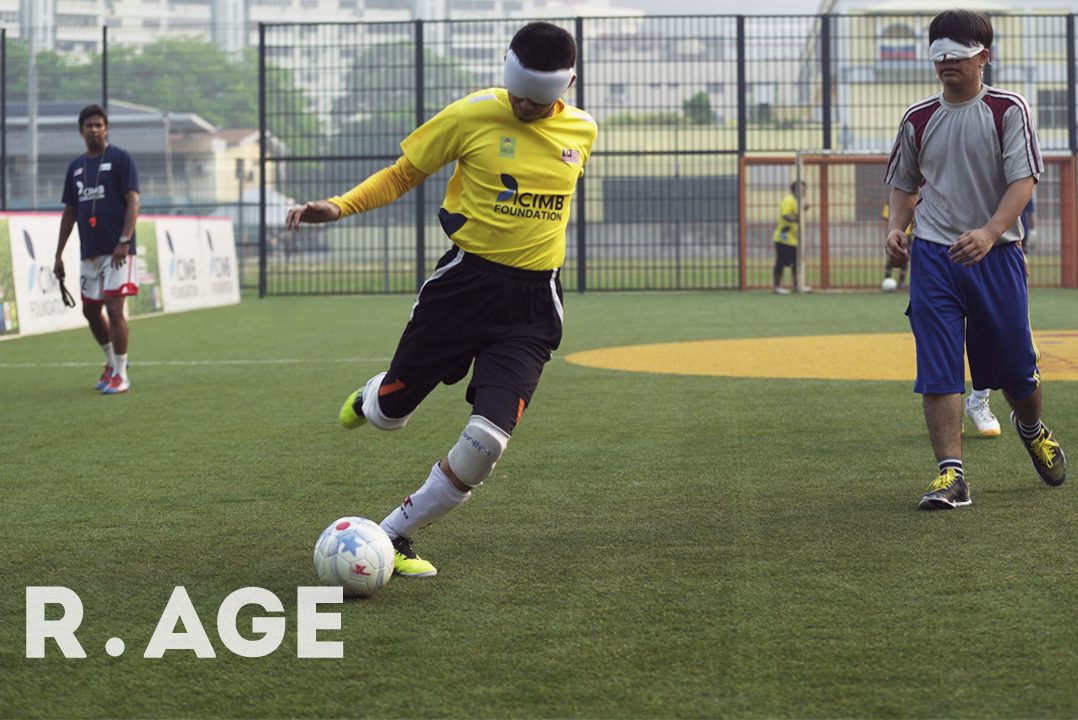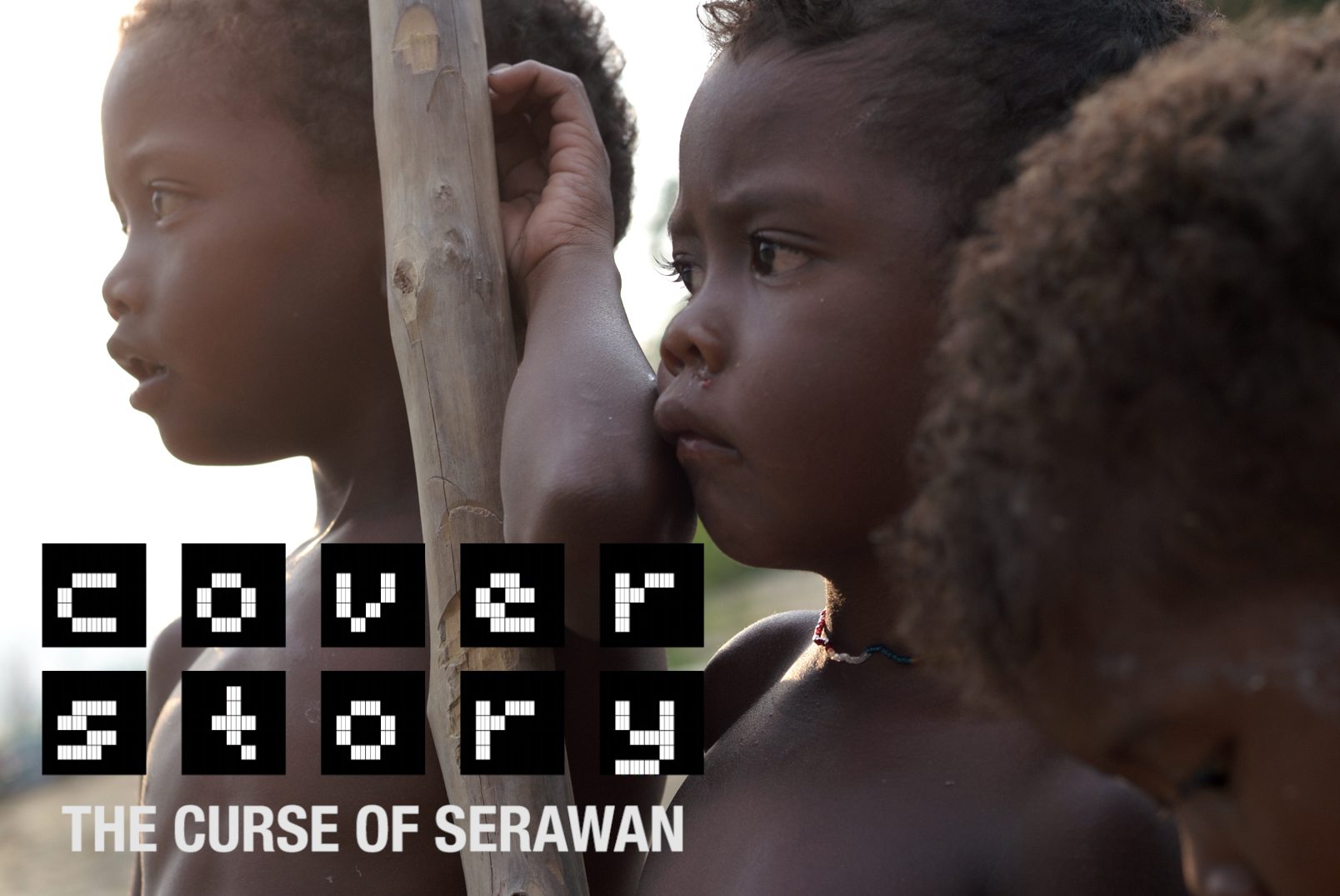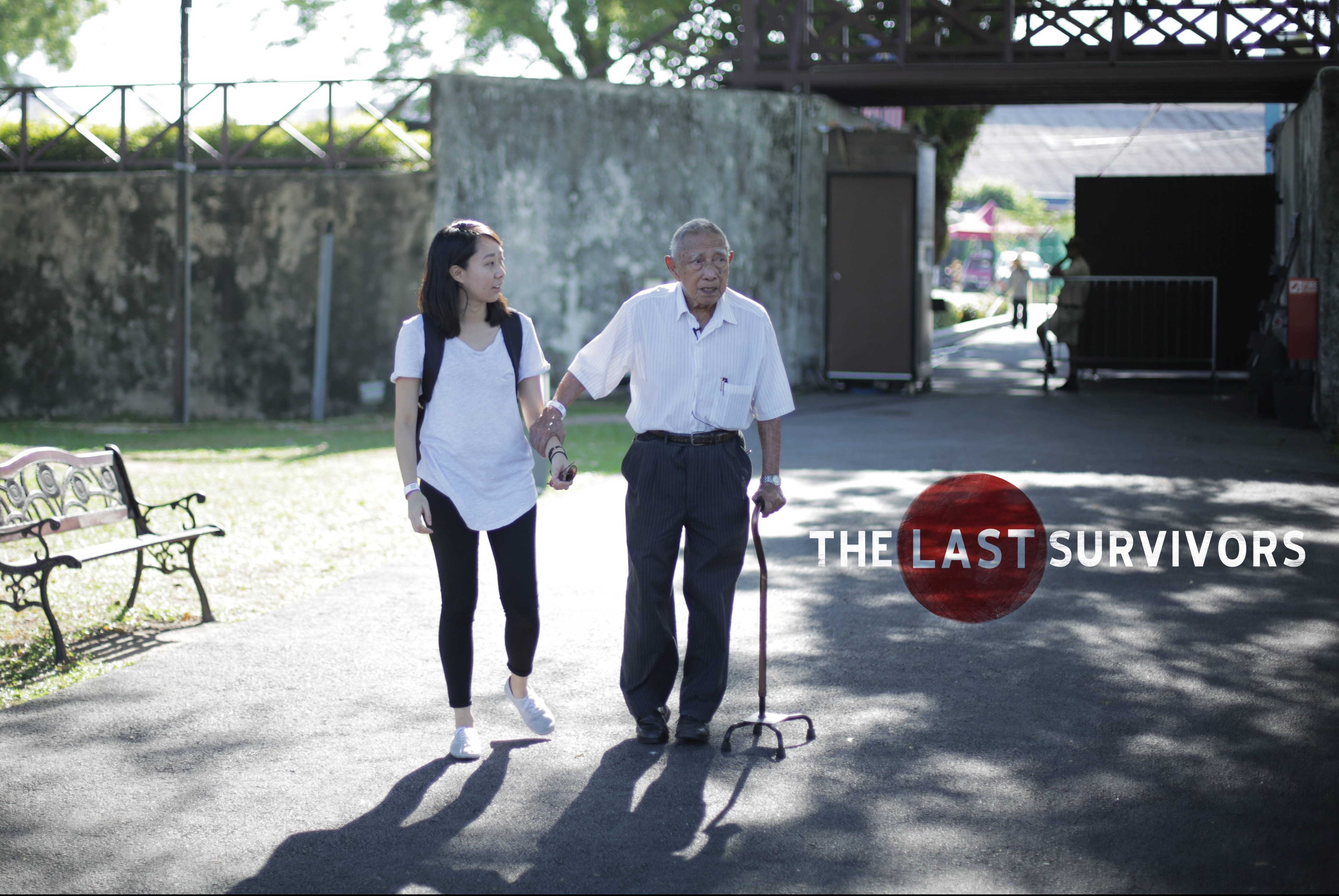Know someone visually impaired who’d like to read this story? Play the SoundCloud version below for them!
Story by LIM MAY LEE
Videos by ELROI YEE, HAFRIZ IQBAL, MARYAM ZAINOL and HANSEL KHOO
HE was surrounded by defenders with no sight of goal, but somehow, national player Mohd Amirul Arif, 23, dribbled the ball through the crowd and slammed it home, to jubilant cheers from the stands.
It was a regular national circuit competition, a small step on Amirul’s long and unlikely journey to his ultimate goal – the World Cup. But it was a competition with a difference. The players were all blind.
Blind football might seem impossible, and even dangerous, but these talented footballers run, tackle, shoot and, yes, score with as much confidence as their sighted peers.
Our national players can dribble past people and score high-quality goals against sighted goalkeepers.
“Our national players can dribble past people and score high-quality goals against sighted goalkeepers,” said coach Sunny Shalesh, who has managed the team for the past seven years. “This is how we beat mighty Thailand last year. We won on merit, not luck.”
The national team won the Malaysian contingent its 50th gold at last year’s ASEAN Para Games in Singapore and are now ranked 16th in the world, but they aren’t planning on stopping there.
They have their sights set on something higher – the 2018 International Blind Sports Federation’s World Blind Football Championship (WBFC), the World Cup of blind football.
The national team didn’t make it to the last WBFC. But this time around, they’re ready.
“I’m excited to represent Malaysia and we really want to make it to WBFC,” said right winger Ahmad Fikri Omar, 19, who scored the winning goal against Thailand. “But it’s not going to be easy. We’re not a full-time team yet, but our fitness has to be perfect and we need to train very hard.”
Ahmad is a reflexology student at the Gurney Training Institute, a vocational training centre for the blind. Most of his teammates in the national team are also students or masseurs.
To qualify, the guys will have to place in the top three at the Asian Blind Football Championship (ABFC), which means coming up against heavyweights China, who recently qualified for the 2016 Rio Paralympics.
RELATED: What blind football training is like
In ABFC 2015, they placed fifth, but coach Sunny is confident they will be ready within the next two years, ahead of ABFC 2017.
“This is the best team I’ve ever assembled,” said Sunny with pride, adding that all his players can attack and defend, unlike most Southeast Asian teams that deploy one mobile attacking player, and three mostly static defenders.
“This is what we call a ‘four wheel drive’,” he said. “This is how we won against Thailand, and how we will go up against the big boys like China and Iran.”
It might sound like something from Daredevil, but at the National Blind Football Championship (NBFC) last week, the players were dribbling around opponents and scoring with unerring accuracy, all while completely blindfolded (some players are visually impaired, but not fully blind).
Sunny said it’s all down to intensive training, a heightened sense of hearing and very, very good communication skills. In blind football, you’re communicating not just with your teammates, but with your opponents as well, in order to avoid dangerous collisions.
The balls have bells embedded inside, which allows players to track the ball. A goal guide stands behind each goal, giving players directions on where to shoot.
To help get them used to this system of play, Sunny has to train his players from the ground up, teaching them to do everything from the basics of running unassisted all the way to advanced blind football strategies.

National-level competitions are a great way for state players to prove themselves and secure a spot on the national team.
Needless to say, it isn’t easy.
“You really have to listen to the ball,” said Ahmad Fikri, who lost his sight after an accident. “It was so much easier when I could see, so when I started playing blind football, I found it very difficult to hear and follow the ball.
“I got scolded by coach Sunny a lot,” he added ruefully.
It’s clear Ahmad Fikri, whom Sunny calls his “golden boy”, has come a long way; and it’s all down to his hard work in training.
“It requires a lot of patience,” said Sunny. “In normal football, the coach can demonstrate what he wants, and the players execute it. In blind football, the challenge lies in getting them to do what we want by only using their hearing. They have to then draw a mental image and execute it on the pitch.”
Training is on weekends – two and a half hours of intensive technical and tactical practice for the national-level players.
Their dedication to the beautiful game is incredible. Not only do they have to sacrifice time and money to pursue their goal (some travel from other states to the team base in Brickfields, KL every weekend), they’re also more prone to injuries compared to sighted football players.
Collisions are common in blind football, which is why players must shout “voy” before they move in for a tackle, alerting the attacking player to their position.
Even then, accidents occur.
Amirul, for instance, played at NBFC with knee and leg injuries sustained at the Hong Kong Open blind football tournament.
Giving up on football is not an option,” he said. “No matter how difficult, I will always try to continue because I want to be the best in the team.”
Mohd Azuan Abdul Rasiad, 19, had to miss the Para Games when a teammate fell on his leg, breaking it.
“I was very disappointed because I had trained so long for the tournament,” said the striker. “I couldn’t play for three months, and I couldn’t even go to school for a month because it was so hard to get around.”
Despite missing out on the Games, the Form 6 student is not letting go of his World Cup dreams.
“I’m used to getting hurt. When I first started out I had a lot of collisions, and suffered many injuries before I made it to the national team,” he said.
“But I’m always going to keep playing blind football, and I want us to make it to the WBFC and Paralympics someday.”
Future champions
Like any good coach, Sunny is always on the lookout for new talents to join the national team.
And that’s why the CIMB Pan Disability Football Club, which he founded, organises tournaments like NBFC so blind footballers across the country can showcase their talent.
“From here, I can see if there is talent that can be coached. We’ve spotted about five people already,” he said.
The players in the national circuit come from blind associations and training schools like Gurney Training Centre, and are not sponsored by their state governments, even though most teams represent a state.
The national team – until now only partially supported by the Malaysian Sports Council (MSC) – will be a legit national team come January 2017. Coach Sunny and all the players will become part of a full-time sports programme, and amateur players from around the country will also have something to aim for.
“If they’re good enough, we’ll put them in the national development circuit, where we can teach them technical and tactical skills,” Sunny added.
Blind football newbie Sulaiman Nor Azizan, 18, is one such promising player. The student moved to Kuala Lumpur when he heard GTC trained blind footballers.
“Before this, I played with a football wrapped in plastic so I could hear it,” he said. “I asked my friends if there was such a thing as football for blind people, and they directed me to GTC.”
Even though he only started playing proper blind football early this year, Sulaiman was part of the GTC team that won the NBFC, beating teams from Sabah, Johor, and Penang along the way.
“I trained for four months for the competition so I’m very happy we managed to win,” he said.
“I even managed to score my first ever goal! It was against Selangor, and it was my only goal in the tournament, but I feel satisfied because I’m still not very good at shooting yet.”
Second place went to Johor, for which Amirul played a starring role. His three goals helped him bag the Best Player award.
“It’s disappointing that we lost, since we had higher ball possession,” he said. “But we did our very best. Maybe luck wasn’t on our side.”
For Sulaiman’s fledgling career, luck won’t play much of a role, said Sunny. Whether he makes it depends completely on how hard he’s willing to work.
“Being on the development team will involve the same sacrifices the national team members have to make,” said Sunny. “We won’t go easy on them.”
Volunteer!
Until they start receiving full funding from the MSC, the team, now mostly funded by the CIMB Pan Disability Football Club, needs jerseys, training materials and even transportation for the players.
“It’s not all about the money,” said Sunny. “We’re always looking for volunteers to help in any way they can.”
Sighted people are also welcome to join the team. The goalkeepers are sighted, and so are the goal guides who stand behind the opponent’s goal giving instructions to the players.
Referees are also needed, especially with Malaysia hosting the next ASEAN Para Games in 2017.
“Some of our current referees are volunteers too,” said Sunny.
“We gave them a three-month training course in the rules of blind football, and now they’re great, but we need more before the ASEAN Para Games.”
The rules of blind football
DESPITE the name, blind football isn’t just for the blind. Even though it’s usually played by the visually impaired, anyone can play the game, since all players have to be blindfolded anyway.
So just in case you want to give it a try, here are a few things you should know.
1. Each team consists of five players – four blindfolded outfield players, and one sighted goalkeeper.
2. Apart from the five players, each team also has a “goal guide”, a sighted person situated behind the goal. His/her role is to instruct the players where to shoot.
3. The ball has a bell in it, which allows the players to know where the ball is every time it moves.
4. Before attempting a tackle, players must shout “voy”, which means “I’m here” in Spanish. That alerts the opponent to the tackling player’s position, which helps avoid painful collisions.
5. Before a player takes a penalty kick, the goal guide taps both goal posts and claps right in the middle, so the player knows where the posts are.
6. As difficult as it may be, spectators have to watch the games in silence to avoid drowning out the sound of the ball or the goal guides’ voices.






Leave a reply